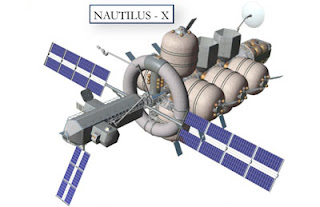Gravity Plating Part 2
In an earlier post I described a system for generating zero-g in the laboratory and how this might be used to generate a standard gravity on-orbit and for deep space missions. Today, Narayanan Ramachandran of NASA-Marshall gave a talk at ISDC and I had the opportunity to ask him a few revealing questions. As I expected, there is few technical problems with operating a system such as this in space. Superconducting magnets of sufficient size to levitate a human exist and, although they cost a lot for laboratory use, they are chump change for a human spaceflight program. The power requirements are not excessive for the advanced solar power systems NASA is planning to bring online over the next few years, or for the in-space nuclear power systems that may become available eventually. There was also some discussion about how much gravity humans need to maintain healthy bones, which was the primary motivation for the technology. Not for the first time I'm tempted to look up suppliers and crunch the numbers for an earth-bound entertainment use of this technology - zero-g at sea level anyone?


Comments
Post a Comment